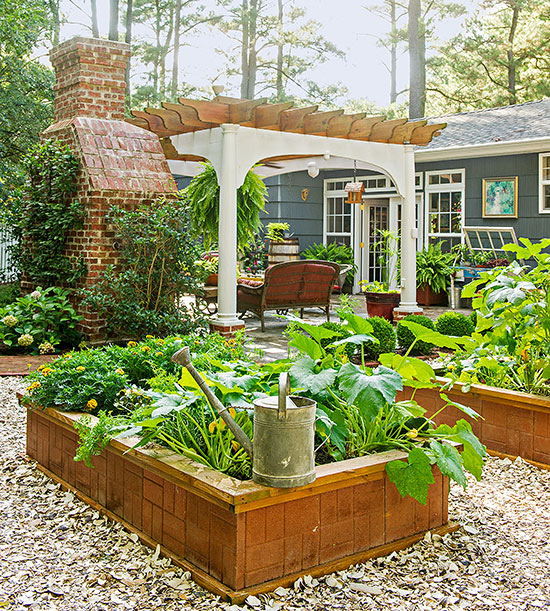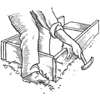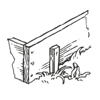
continue reading below

Step 1 : Construct a raised bed of any size, using one of several methods. Kept to no more than 4 feet deep, the bed will be easier to reach or step across. Use lumber, such as 1-foot-deep boards, or landscape timbers; concrete block; or recycled plastic lumber in snap together parts. Buy plastic corner caps that interlock wooden lumber together parts almost instantly to make a bed without nails or screws. Or, use nails or deck screws to secure the joints.

Step 2 : Secure the raised bed frame by burying the bottom of it 2 inches into the ground. Drive a stake into the soil at each outside corner of the bed; nail or screw the stakes in place. Add any commercial topsoil (avoid fill dirt that could contain weed seeds) and any organic materials, such as compost, chopped leaves, rotted manure, and grass clippings. No need to dig or till raised beds every year -- just add layers of organic matter.
Benefits of Building a Raised Bed:
- Filled with rich soil and valuable compost, a raised bed offers an ideal planting medium -- especially where soil is poor or compacted.
- Soil drains easily, promoting healthy plants. Soil warms earlier in spring, giving the gardener a head start on planting and a longer, more productive growing season.
- Made any size and shape, raised beds typically provide a more manageable garden.
- The bed's framework gives you a place to kneel, sit, or stand.
- The deeper the bed, the less you'll need to bend over to work it.
- Three-foot deep beds are adaptable to a wheelchair as well as gardening while standing.
- Turn a problematic slope into terraced gardens as in the front yard-turned vegetable garden that's shown.
- Raised beds hold soil and moisture better than sloping ground.
- Planted intensively, raised beds hold more plants and offer greater yields from edible plants.
- Raised beds offer an inexpensive option, especially if you recycle materials for bed edges, such as concrete block, or lumber.
- They provide a way to combat burrowing animals, such as moles.
- To keep critters out, staple hardware cloth across the bottom of the bed before filling it with soil.
- Minimize weeding, especially if you line the bottom of the bed with landscape fabric before filling it with soil.
- Edging prevents grass and weeds from creeping into the garden, meaning less maintenance.
- Use small raised beds to nurture young plants and get them off to a good start without competition from other plants.
- Set cold frames over the beds to extend the growing season in fall and spring.
Add a quick raised bed structure with a landscaping timber bed.
Learn more about the benefits of raised garden beds.






 continue reading below
continue reading below

